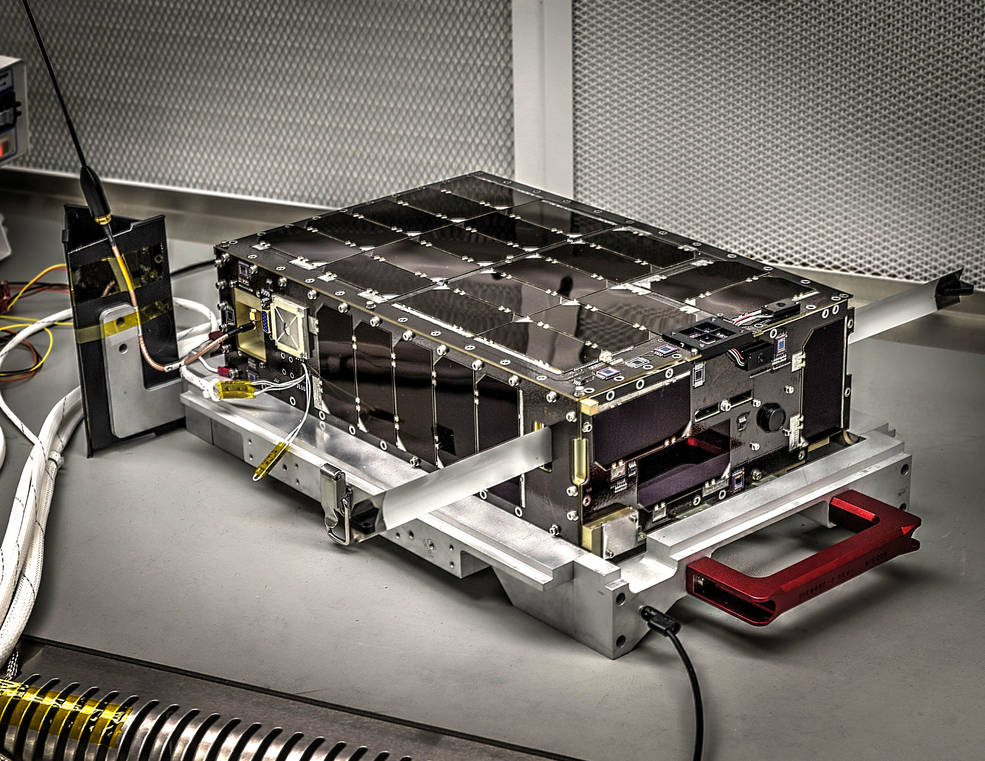Construction of NASA’s Dellingr CubeSat – a miniature satellite that provides a low-cost platform for missions – is complete, and the satellite has just left the lab for environmental testing. This is a key step after any satellite has been built to make sure it can withstand intense vibrations, the extremes of hot and cold, and even the magnetic fields of space – all the rigorous conditions the CubeSat will encounter during launch and spaceflight.

Dellingr Project Manager Chuck Clagett points to the CubeSat’s boom, at the end of which is a magnetometer, an instrument that takes measurements of its magnetic surroundings. Dellingr also carries two no-boom magnetometers, a first for such miniature satellites.
Credits: NASA’s Goddard Space Flight Center/Bill Hrybyk
Named for the god of dawn in Norse mythology, Dellingr will study the ionosphere – the outer region of Earth’s atmosphere populated by charged particles, ionized by incoming solar radiation and magnetospheric particle precipitation. The magnetosphere is Earth’s magnetic environment, and sometimes, charged particles in this region are deposited into the atmosphere below. Slightly larger than a cereal box, Dellingr carries three novel payloads to perform this science: a miniaturized mass spectrometer and two no-boom magnetometer systems. These instruments will help Dellingr create a chemical and electromagnetic profile of Earth’s outer atmosphere, an important component of the complex interconnected sun-Earth system – which can drive changes in our space weather and impact satellites.
Small satellites, including CubeSats, are playing an increasingly larger role in exploration, technology demonstration, scientific research and educational investigations at NASA, including: planetary space exploration; Earth observations; fundamental Earth and space science; and developing precursor science instruments like cutting-edge laser communications, satellite-to-satellite communications and autonomous movement capabilities. They also allow an inexpensive means to engage students in all phases of satellite development, operation and exploitation through real-world, hands-on research and development experience on NASA-funded rideshare launch opportunities.
FEATURED:























